Australia beckons with sun-drenched beaches, vibrant cities, ancient rainforests, and the mesmerizing red heart of the outback. While this vast island continent could easily consume months of exploration, our carefully crafted three-week itinerary delivers an unforgettable journey through Australia’s most iconic landscapes and experiences – from Melbourne’s artsy laneways to Sydney’s majestic harbor, with the Great Ocean Road, Uluru’s spiritual presence, and Gold Coast’s endless beaches in between.
Quick Facts About This Trip
- Total Distance: Approximately 6,300 km (3,915 miles)
- Budget: $150-200 per day (mid-range, not including international flights)
- Best Time to Visit: March-May (Australian autumn) or September-November (spring)
- Transportation: Mix of rental cars, domestic flights, trains, and buses
- Visa: Electronic Travel Authority (ETA) or eVisitor visa required for most visitors
- Language: English
- Ideal For: First-time visitors, nature enthusiasts, city explorers, and wildlife lovers
- Terrain: Incredibly diverse – cosmopolitan cities, dramatic coastlines, lush rainforests, and red desert landscapes
Planning Your Australian Adventure
Australia’s immense size means that even with three weeks, you’ll only scratch the surface of what this extraordinary country offers. This carefully crafted itinerary focuses on Australia’s southeastern region, creating a loop that captures the essence of iconic cities, breathtaking coastlines, and the spiritual heart of the outback.
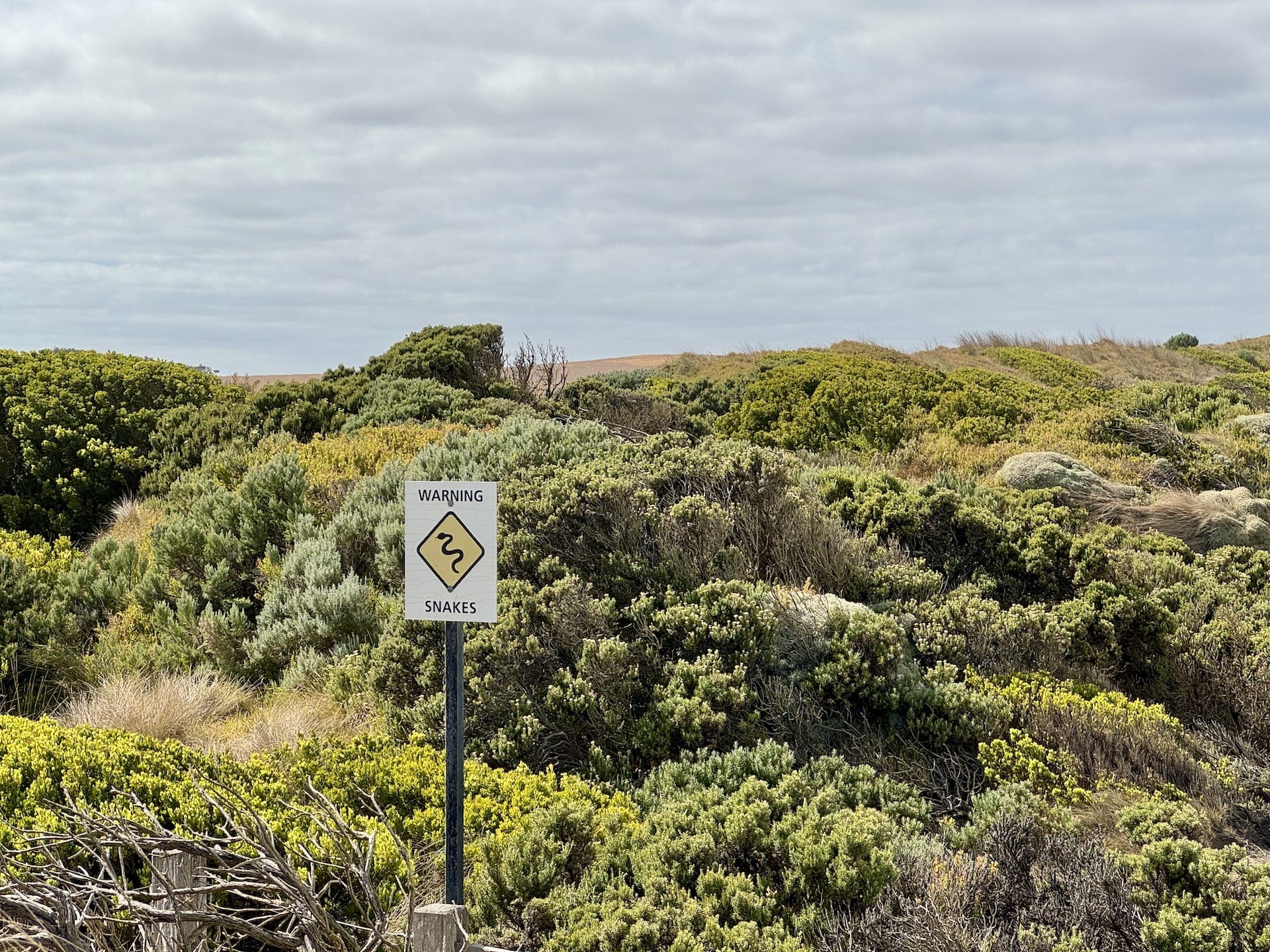
A few important things to keep in mind:
- Consider an “open-jaw” flight itinerary – arriving in Melbourne and departing from Sydney (or vice versa) to maximize your exploration time
- Book domestic flights in advance for better rates
- Book accomodation also in advance – they fill up surprisingly early
- Prepare for varied climates, though extreme temperature variations are unlikely in autumn or spring
- Remember Australians drive on the left side of the road
- Start your adventures early to avoid midday heat, especially in the outback
- Take sun protection seriously – Australia’s UV levels are among the world’s highest, even on cloudy days (you can buy Cancer Council’s sunscreen at any chemist, which is the best one I have ever used)
- Always carry water, particularly when venturing outside urban areas
Australian Itinerary at a Glance
First Week: Victoria’s Urban Culture and Coastal Beauty
- Days 1-3: Melbourne’s cultural treasures and hidden laneways
- Days 4-6: Great Ocean Road’s dramatic coastline and ancient forests
Second Week: South Australia and the Red Center
- Days 7-8: Adelaide and wine country
- Day 9: Alice Springs and MacDonnell Ranges
- Days 10-11: Uluru (Ayers Rock) and Kata Tjuta
- Day 12: Return to Alice Springs
Third Week: Queensland and New South Wales Highlights
- Days 13-14: Brisbane’s subtropical beauty and riverfront life
- Days 15-17: Gold Coast’s golden beaches
- Days 18-21: Sydney’s harbor magnificence and the Blue Mountains
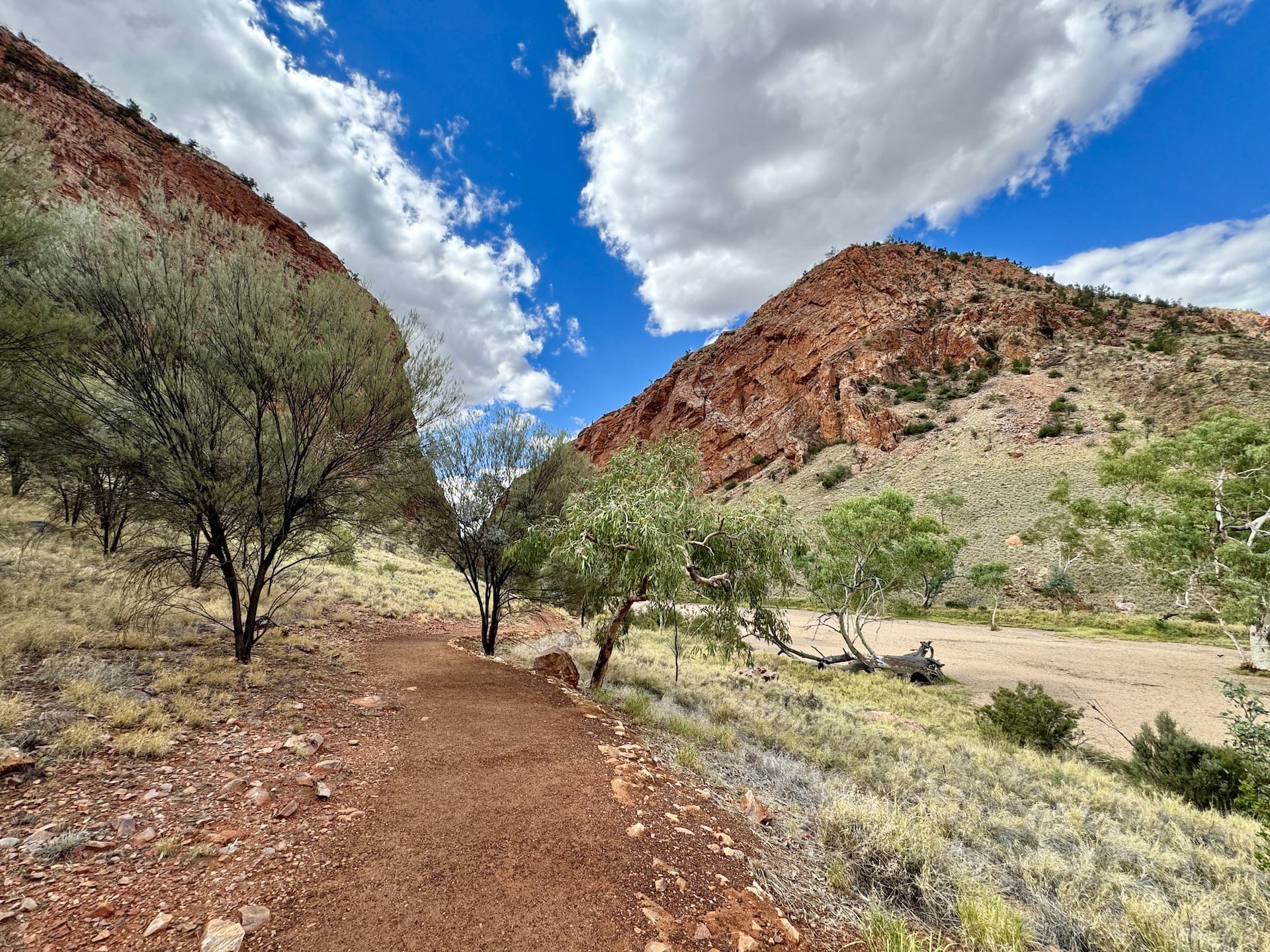
While you could easily spend a year exploring Australia’s endless wonders, most travelers have limited vacation time. This three-week itinerary efficiently covers the country’s most beloved attractions while providing a taste of its extraordinary diversity.
Andrea and I completed this route in March, which I believe offered perfect conditions. This marks the beginning of Australian autumn, so the outback isn’t overwhelmingly hot (though we did encounter a 40°C/104°F heatwave, but in Adelaide), while still being warm enough for beach activities. Though this grand circuit traverses remarkably different climatic zones, you won’t need to pack for extreme seasonal variations – no bulky winter clothing required.
TThis journey essentially traces southeastern Australia below the Tropic of Capricorn (though I believe we might have briefly crossed it near Alice Springs), creating a magnificent loop through the region’s most captivating cities and natural wonders. I won’t sugarcoat it – the pace is ambitious. We covered roughly 6,300 kilometers (3,915 miles) using a mix of planes, trains, buses, and rental cars. And that figure doesn’t even include our flight from Alice Springs back to Adelaide en route to Brisbane, which would add another thousand kilometers to the tally. The scale of Australia truly defies European or even American expectations of distance.
We arrived in Melbourne and departed from Sydney (deliberately searching for open-jaw flights with different arrival and departure cities), but this grand circuit works equally well in reverse. You could also return to your original arrival city, though you’d need to add a 1.5-hour domestic flight between these major hubs. Now, let’s dive into the day-by-day adventures that await! (We’ll be sharing detailed posts about each destination soon – subscribe to our newsletter to catch them all!)
Days 1-3 — Melbourne: Australia’s Cultural Heart
Our Australian journey began in Victoria’s sophisticated capital, Melbourne – where I instantaneously fell under Australia’s spell. This gloriously diverse, cosmopolitan city conceals countless fascinating stories within its Victorian-era architecture and famous laneway culture, complemented by arguably the Southern Hemisphere’s best coffee scene and dining experiences spread across distinctly characterized neighborhoods.
While the vibrant CBD (Central Business District) deserves thorough exploration, venture slightly beyond to discover iconic attractions like Brighton Beach’s rainbow-hued bathing boxes – those instantly recognizable, cheerfully painted beach huts that line the shore like a vintage postcard come to life. Melbourne’s surroundings offer numerous additional treasures, but three days permits time only for the city’s most essential experiences.
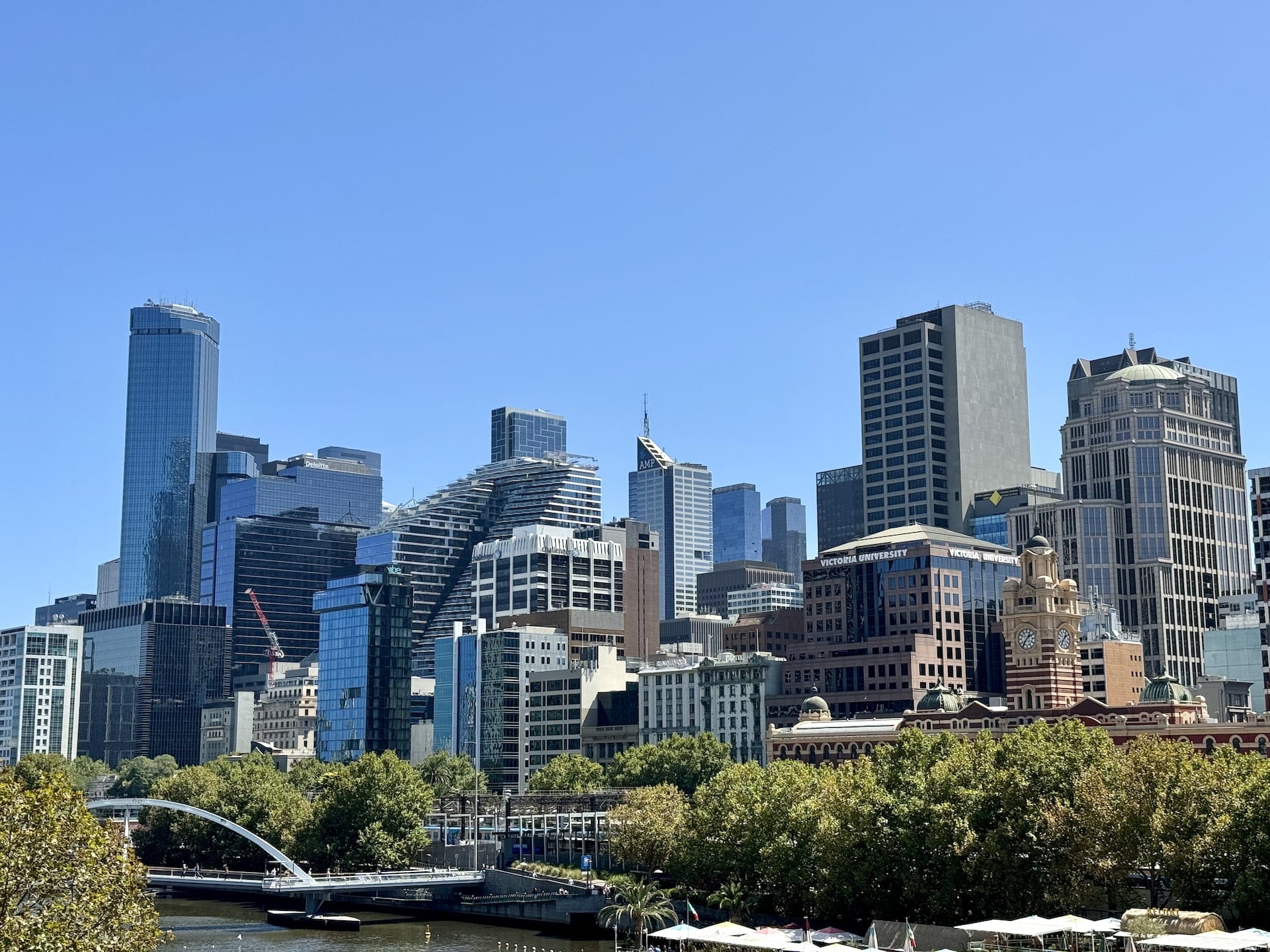
I enthusiastically recommend joining at least one free walking tour (we participated in two) as they efficiently cover the main attractions while providing fascinating historical context and local insights from passionate guides who bring the city’s stories to life.
Melbourne’s weather is infamously capricious, sometimes delivering “four seasons in one day.” Layer your clothing strategically and always carry a light rain jacket, even when morning skies appear perfectly innocent. The city’s locals often joke that if you don’t like the weather, just wait 30 minutes.
Days 4-6 — Great Ocean Road: Nature’s Masterpiece
On our fourth morning, we boarded a train to Geelong to collect our rental car and embark on one of the world’s most spectacular coastal drives – the legendary Great Ocean Road. Though continuing directly from Melbourne was tempting, we strategically avoided navigating the sprawling metropolis while adjusting to left-side driving, making the quick train journey to this smaller city an excellent tactical choice.
The Great Ocean Road winds along a relatively compact section of Australia’s southern coastline, yet delivers an astonishing concentration of natural wonders – from sheer limestone cliffs and pristine beaches to ancient rainforests and iconic rock formations. We chose Apollo Bay and Warrnambool as our overnight havens, with the latter marking the conclusion of our coastal odyssey (which, despite my “compact” description, totaled approximately 500 kilometers/310 miles round-trip).
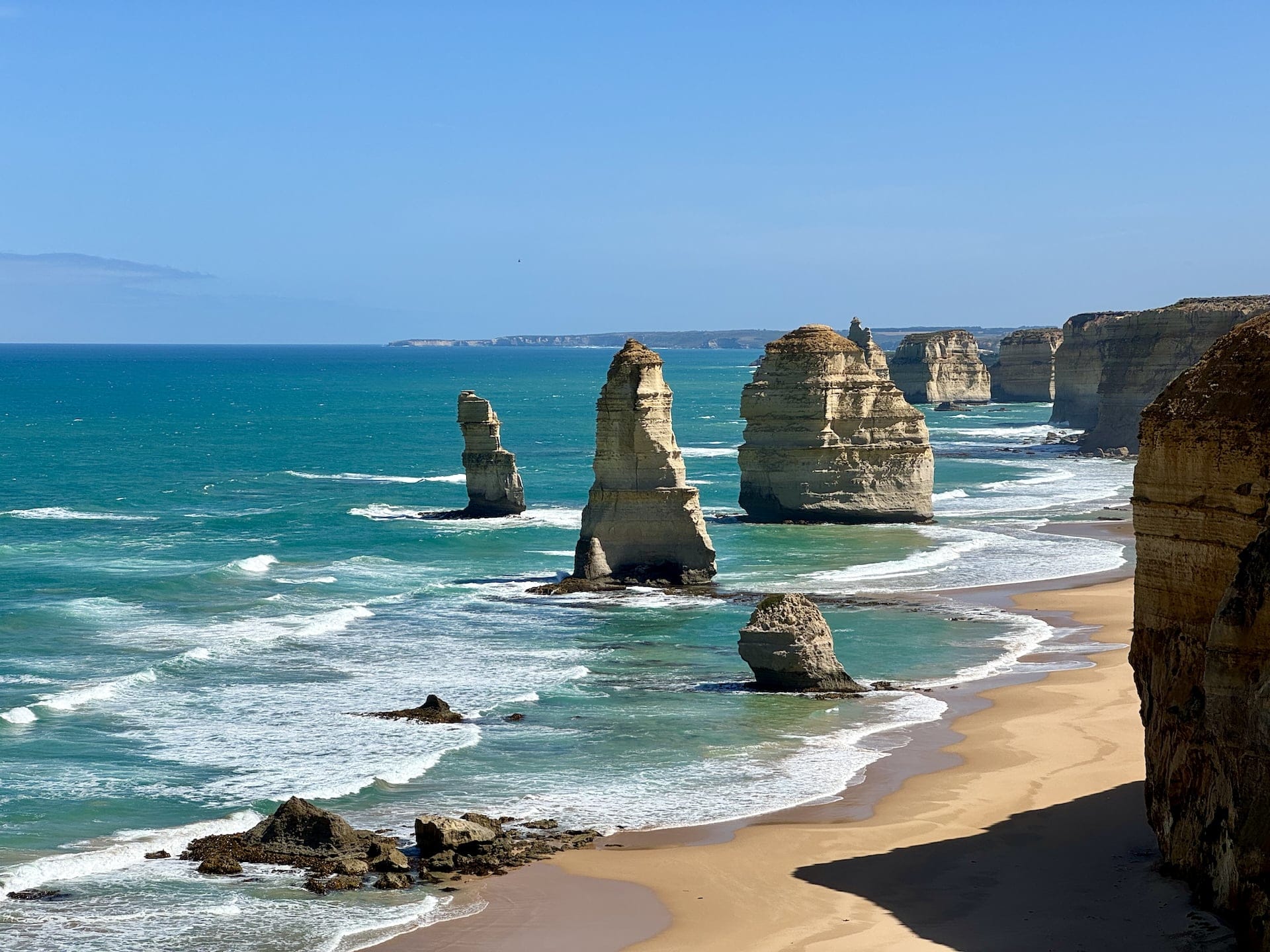
Along this magnificent route, we marveled at the power of the Southern Ocean crashing against the Twelve Apostles limestone stacks, ventured inland to stand in reverent silence beneath the towering California Redwoods in the Otways, and encountered Australia’s beloved wildlife at both Wildlife Wonders near Apollo Bay and Tower Hill Wildlife Reserve near Warrnambool – an extinct volcano crater now teeming with kangaroos, emus, and koalas.
For our return journey, we opted for the faster but considerably less scenic northern route via Highway A1, saving approximately 100 kilometers. After returning our trusty vehicle and experiencing a slightly adventurous Geelong-Melbourne journey (courtesy of a well-timed rail strike forcing us onto replacement buses), we soared westward to Adelaide.
Days 7-8 — Adelaide: Refined Pleasures and World-Class Wines
We technically arrived in South Australia’s elegant capital on day six, but reached our accommodation as evening descended, effectively giving us two full days to experience this underrated gem. Our Adelaide agenda balanced urban exploration, coastal relaxation, and naturally, world-class wine tasting. We opted for a guided tour through the renowned Barossa Valley, but wine enthusiasts with more flexible schedules should consider exploring additional celebrated regions – McLaren Vale’s Mediterranean-inspired vintages being another outstanding option.
Adelaide and its surroundings exude a markedly more relaxed atmosphere compared to Melbourne’s urban energy – a quality we embraced wholeheartedly (as much as possible within our compressed timeline). This slower pace was partly enforced by the aforementioned heatwave, with temperatures soaring beyond 40°C (104°F). As you might imagine, wine tasting amid such scorching conditions creates a particularly memorable – if somewhat head-spinning – experience!
Don’t miss Adelaide Central Market, a food lover’s paradise housing over 70 specialty vendors beneath one historic roof. Visit in the morning for a memorable breakfast among the locals and to assemble the perfect picnic provisions for a seaside lunch at nearby Glenelg Beach, easily reached via the tram.
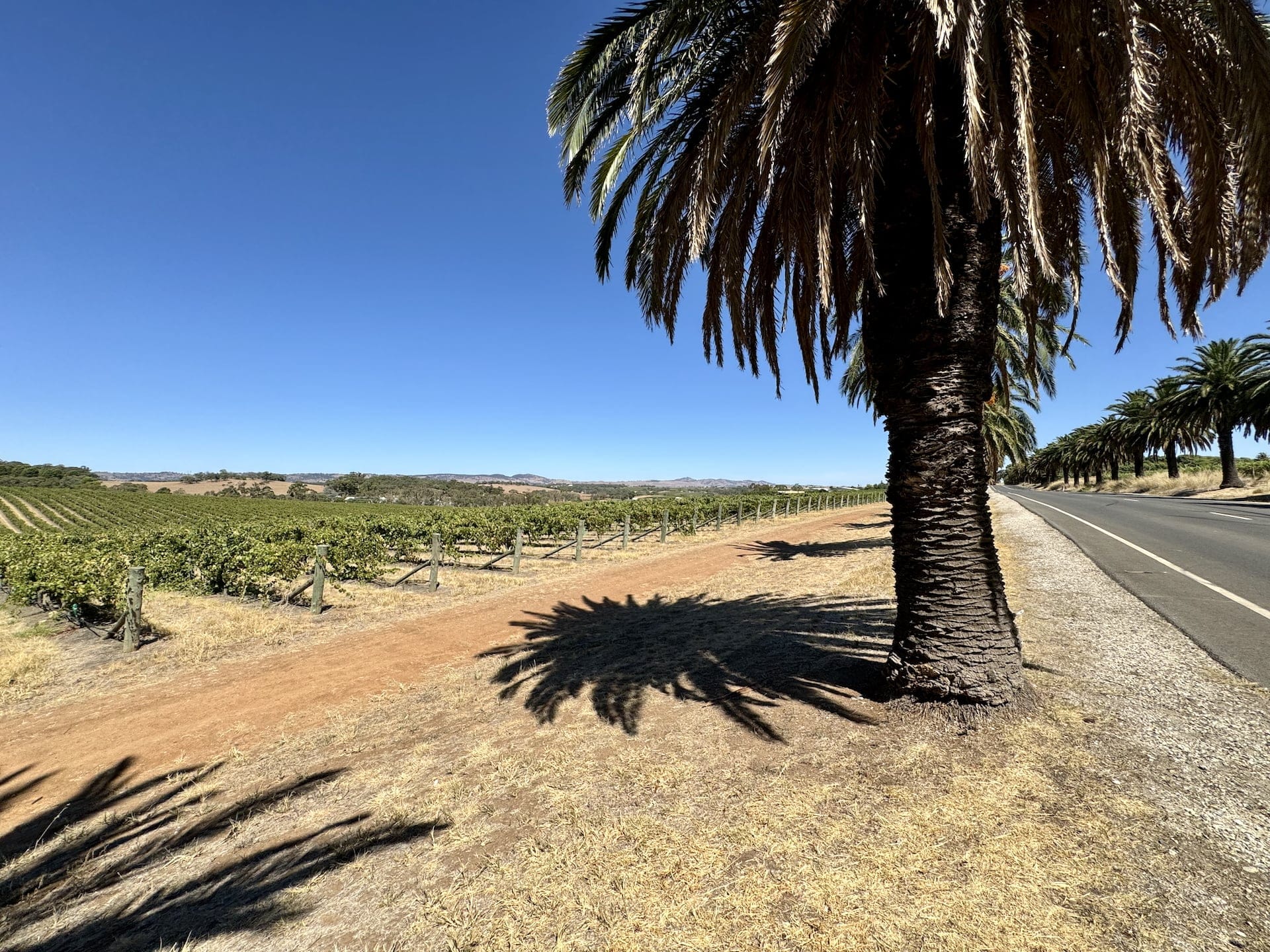
Day 9 — Alice Springs: Gateway to Australia’s Red Heart
Our time in Alice Springs – that isolated outback community that has inspired countless artistic souls – was brief but purposeful. We collected our rental car (a surprisingly sturdy Suzuki Swift that would soon prove its desert worthiness!), took it for an inaugural spin through the ancient landscape of Tjoritja/West MacDonnell National Park, and mentally prepared (especially Andrea) for the epic desert journey awaiting us the following morning – the road to Yulara and the monumental icon of Uluru (Ayers Rock).
Before venturing into the outback, ensure your vehicle is in perfect working condition, your water supplies are abundant, and you’ve familiarized yourself with outback driving safety essentials. Mobile coverage is limited or non-existent in many areas, and and gas stations (servos!) are sparse. And please keep an eye on the animals, because there are very frequent hit-and-runs on this stretch.
Days 10-11 — Uluru: The Spiritual Heart of a Continent
Our first day in this region was entirely consumed by the journey itself. The already substantial 450-kilometer (280-mile) desert drive apparently wasn’t ambitious enough for us, as we impulsively added a 200-kilometer (124-mile) “minor detour” to Kings Canyon – a decision that, while delivering magnificent scenery, reminded these European travelers that Australian distances operate on an entirely different scale. We arrived at Uluru precisely as sunset began transforming the ancient monolith into a canvas of changing colors – from bright ochre to deep burgundy and finally a silhouette of profound darkness against the twilight sky. Even more breathtaking was the interplay of fading light on the 36 dome-like formations of Kata Tjuta (the Olgas) – instantly revealing why this landscape has held such profound spiritual significance for Indigenous Australians across countless generations.
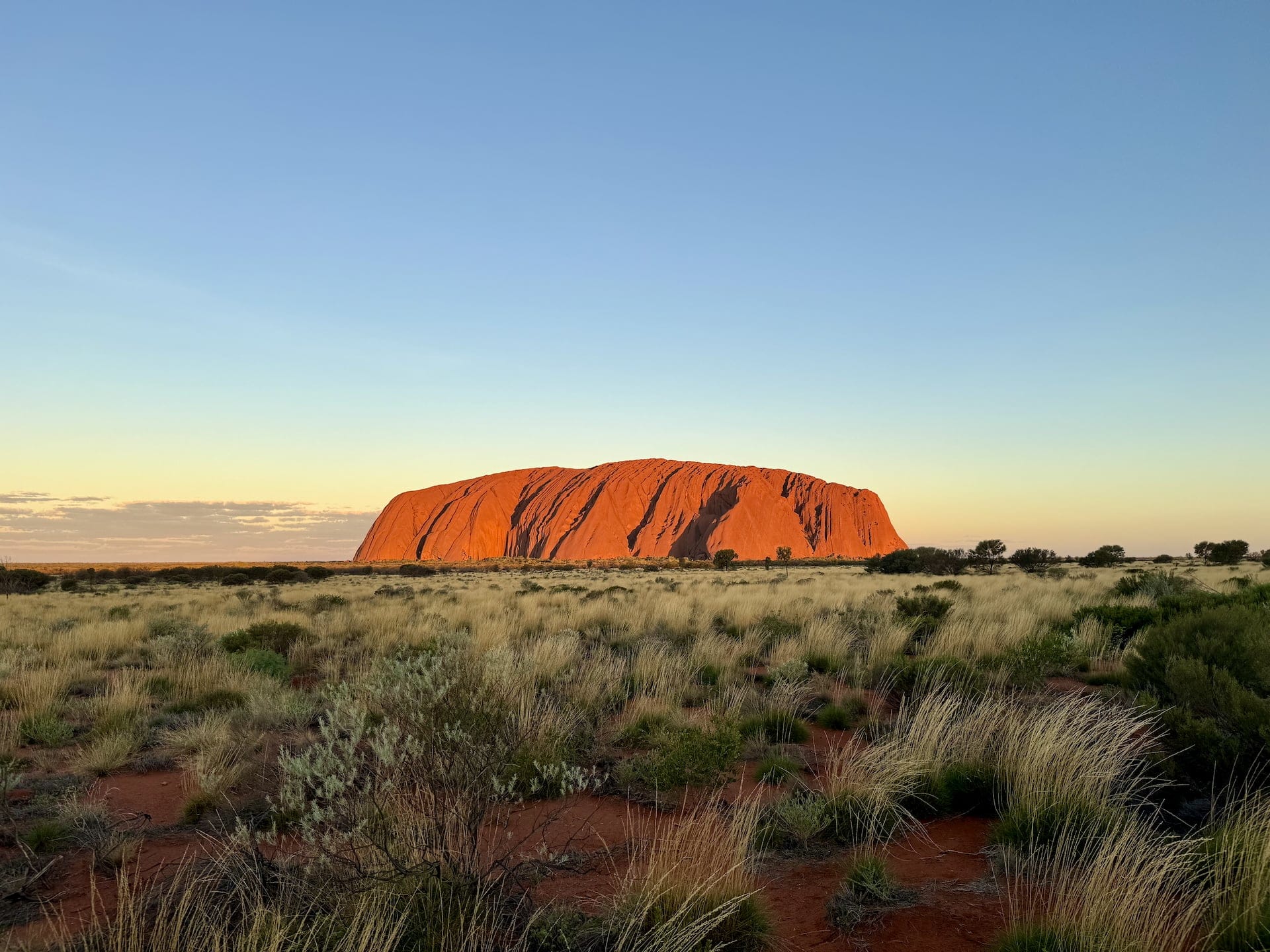
The following day’s adventure centered around the 11-kilometer (6.8-mile) base walk circling Uluru. Despite our pre-dawn arrival to catch the sunrise and beat the heat, temperatures escalated with remarkable speed, eventually leaving me battling mild heat exhaustion. This discomfort was partially offset by distracting my attention from the seemingly infinite swarms of persistent flies absolutely convinced that my perspiration offered their ideal hydration source. (In retrospect, they weren’t entirely wrong.) After completing our morning circuit, we wisely abandoned plans to hike through Kata Tjuta’s Valley of the Winds, instead appreciating these magnificent formations from various viewpoints accessible by air-conditioned vehicle.
The flies at Uluru can be genuinely overwhelming during certain seasons. Consider purchasing a head net before arriving – you might initially feel slightly ridiculous wearing what looks like a bee-keeper’s veil, but you’ll be significantly more comfortable than those frantically waving hands around their faces throughout the day. Also, start your base walk no later than sunrise, carry more water than you think necessary, and respect the request not to climb Uluru – both for cultural reasons and for your own safety.
Day 12 — Return to Alice Springs: Desert Wildlife Encounters
I should clarify that Alice Springs could technically be omitted from this itinerary entirely, as Yulara (the resort town near Uluru) has its own airport with connections to major cities. However, we specifically wanted to experience (at least once) the remarkable drive connecting these two outback communities – that hypnotic ribbon of asphalt cutting through the infinite red landscape. Returning the rental car in Yulara and flying directly to our next destination would have been significantly more expensive, so we incorporated a second Alice Springs visit – essentially an afternoon and overnight stay.
This bonus time provided the perfect opportunity to visit the celebrated Kangaroo Sanctuary, offering an unforgettable experience for animal lovers eager to understand these iconic marsupials. Chris “Brolga” Barns, the sanctuary’s passionate founder and star of BBC’s documentary series “Kangaroo Dundee,” delivers a tour filled with heartwarming rescue stories, interesting kangaroo facts, and magical sunset moments with rescued joeys – creating memories that will outlast most others from your Australian adventure.
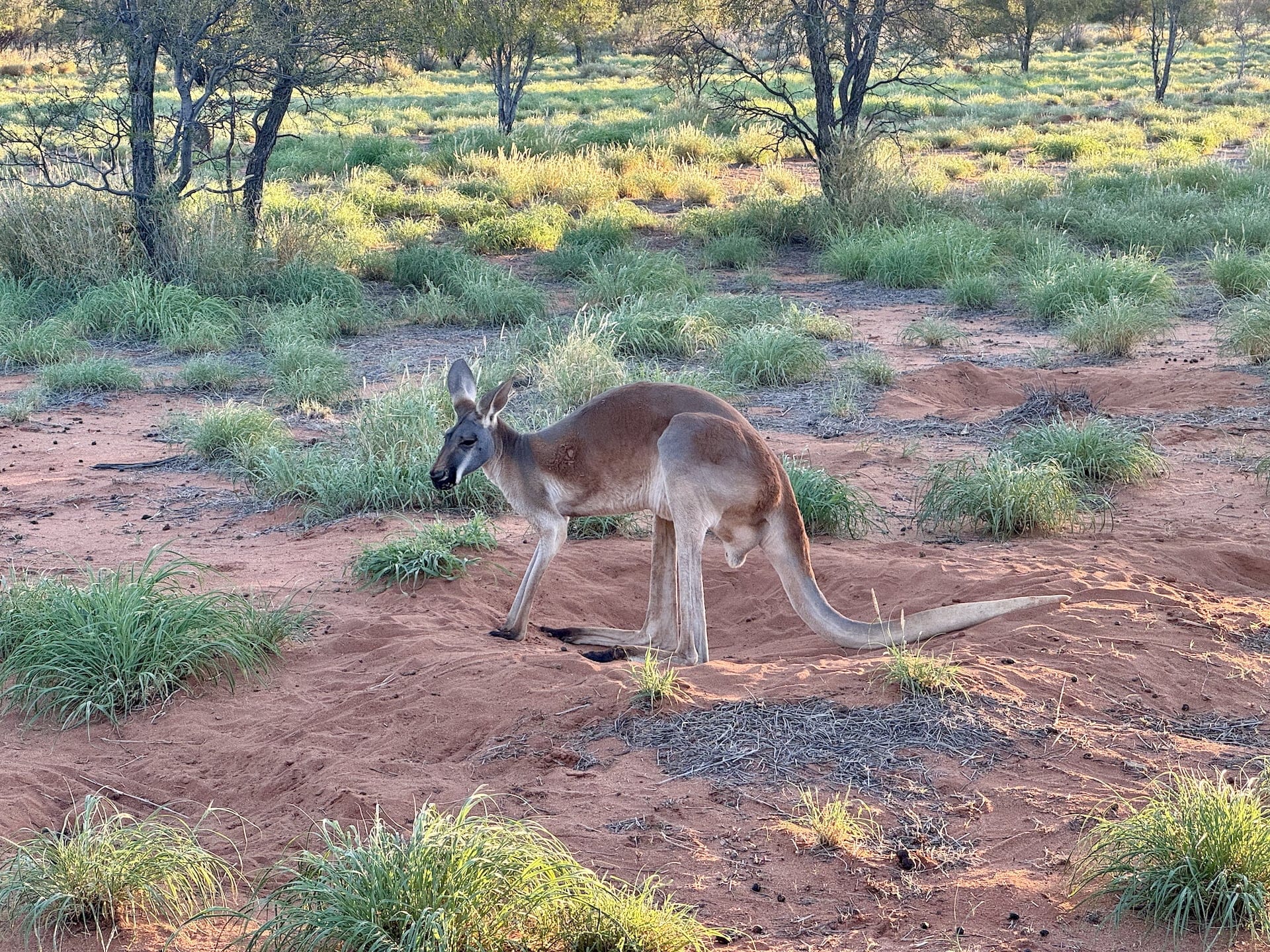
The Kangaroo Sanctuary operates afternoon tours only, and advance booking is essential as they frequently sell out, especially during peak travel seasons. The experience of watching rescued joeys being bottle-fed as the desert sun sets behind them is absolutely worth adjusting your schedule to accommodate.
Days 13-14 — Brisbane: Queensland’s Subtropical Gem
We reached Brisbane’s palm-lined streets via a connecting flight through Adelaide, though direct flights are readily available at reasonable prices – we simply couldn’t secure convenient timings, and they don’t operate daily. Between Virgin Australia and Qantas, however, most days offer some connection to Queensland’s capital.
Our two nights in Brisbane allowed time for a whirlwind city tour (including the spectacular Botanic Gardens with their Jurassic-feeling fern sections and the famous man-made Streets Beach along South Bank), plus reconnecting with a friend I hadn’t seen in years who now calls Australia home – adding that personal dimension that often creates the most meaningful travel memories.
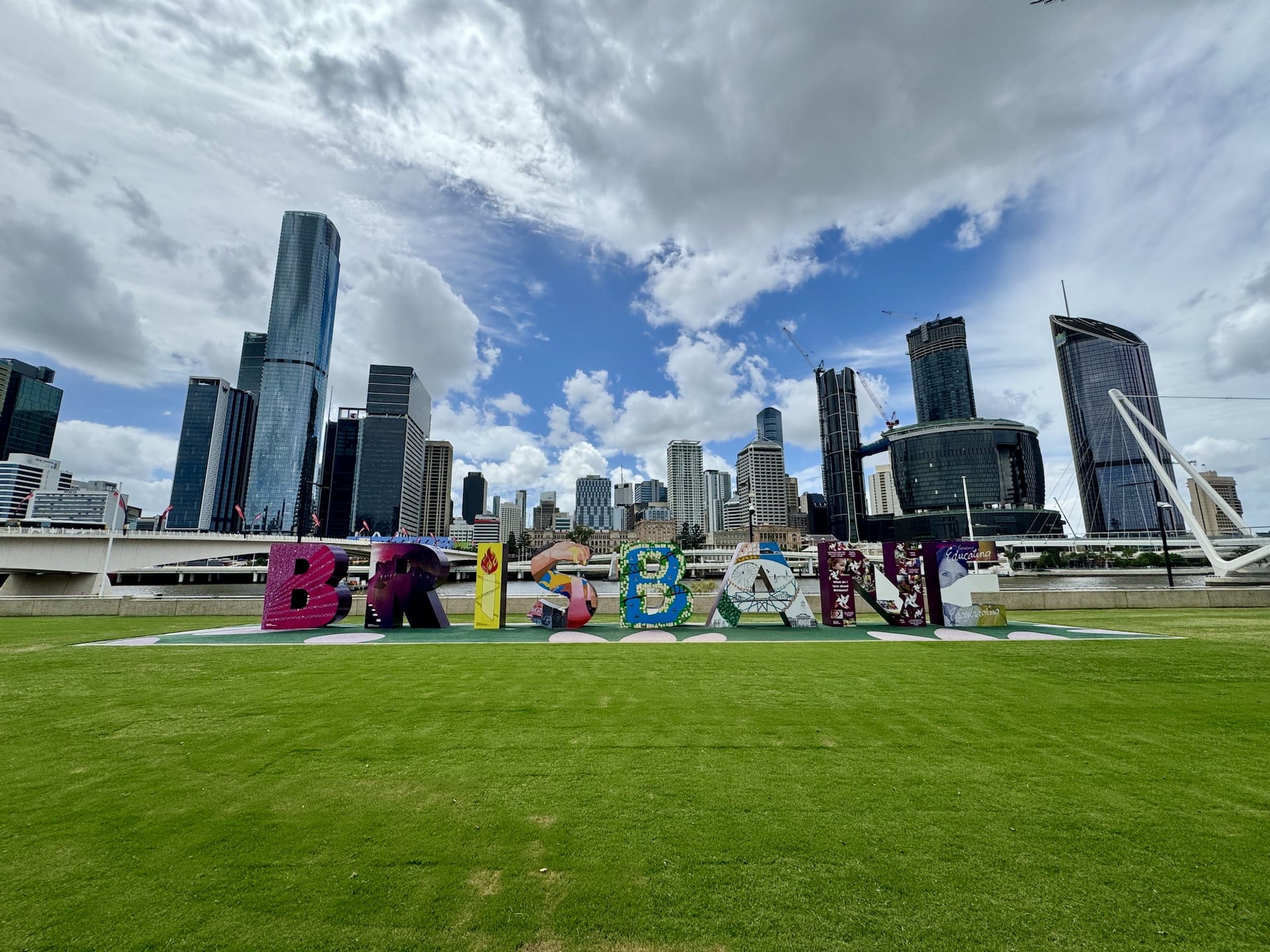
Days 15-17 — Gold Coast: Surf, Sand, and Subtropical Splendor
We initially planned to travel from Brisbane to Gold Coast via the efficient train and light rail connection – but discovered upon arrival that track maintenance had suspended regular service along significant portions of the route. Here I must highlight the exceptional helpfulness encountered throughout our Australian journey, as transit staff patiently explained exactly how we could navigate to the first operational train station via replacement buses, then continue seamlessly to our coastal destination.
Having maintained a rather ambitious pace until this point in our journey, we deliberately downshifted here. Gold Coast itself doesn’t boast an abundance of traditional tourist attractions, but compensates with an extraordinarily long stretch of pristine golden sand where we enjoyed several refreshing ocean swims – complemented by relaxing dips in our Airbnb building’s pool and jacuzzi. While we encountered some rainy periods, these were easily filled with visits to a retro arcade in Surfers Paradise or mini-golf competitions that revealed Andrea’s putting proficiency.
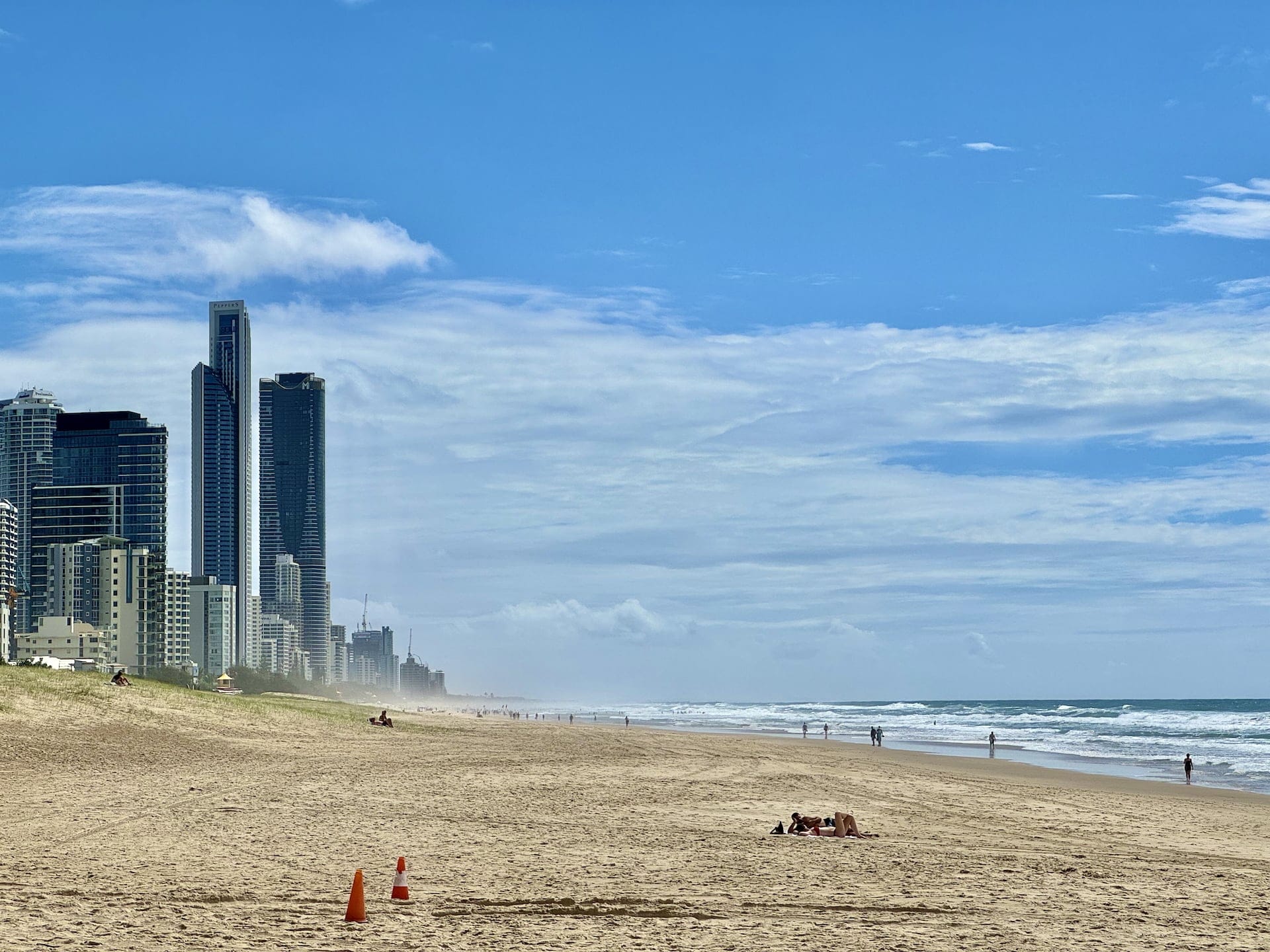
Gold Coast possesses a distinctive atmosphere that primarily targets a younger demographic (though this varies significantly depending on which part of the 70-kilometer/43-mile coastal strip you’re exploring), with unmistakable party vibes that aren’t necessarily our preferred travel style. Nevertheless, it provided the perfect setting for a few days of sun-soaked relaxation before our final Australian destination.
While Surfers Paradise represents the most famous and tourist-oriented section of Gold Coast, consider staying in Broadbeach or Burleigh Heads for a slightly more sophisticated atmosphere with excellent beach access and dining options, but fewer nightclubs and party-focused establishments. The light rail system makes it easy to explore different neighborhoods regardless of where you base yourself.
Days 18-21 — Sydney: Harbor City Finale
We flew to Sydney from Gold Coast Airport (OOL). As the final stop on our circuit, we were determined to make the most of our time in Australia’s largest city.
No visit would be complete without experiencing the Sydney Opera House and Harbour Bridge (which we crossed by train then came back by the ferry). We joined another free walking tour and also explored the Royal Botanic Garden. One morning was dedicated to famous Bondi Beach with its turquoise waters and spectacular people-watching, followed by the scenic six-kilometer (3.7-mile) coastal walk from Bondi to Coogee Beach – a path that hugs dramatic cliffs and connects several smaller beach communities, each with its own distinct character.
For our final full day before reluctantly departing Australia, we escaped the urban environment once more for a day trip to the misty Blue Mountains, where dramatic sandstone escarpments drop into verdant valleys. The view of the Three Sisters rock formation against this vast wilderness backdrop provided the perfect final image to carry home from this extraordinary continent.
For spectacular city views that rival any expensive harbor cruise, take the public ferry from Milsons Point Wharf to Circular Quay. This short journey across Sydney Harbour offers postcard-perfect perspectives of the Opera House and Harbour Bridge at a fraction of the cost of tourist-focused cruises.
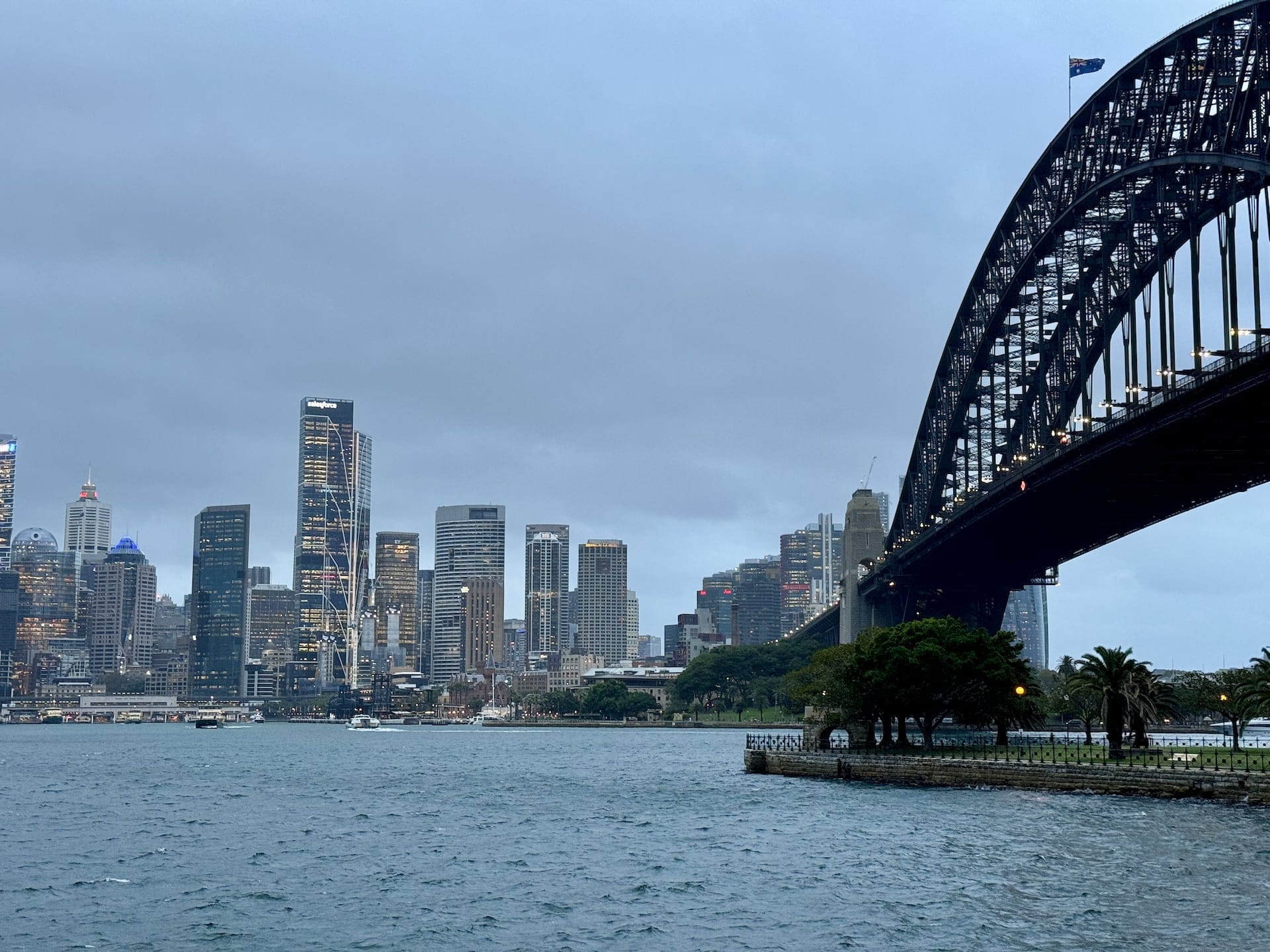
Australia’s Unforgettable Magic: Final Reflections
While a three-week journey can only offer a tantalizing introduction to Australia’s immense treasures, this ambitious itinerary delivers an extraordinarily well-rounded experience of the country’s diverse highlights. From Melbourne’s sophisticated laneways to the spiritual silence surrounding Uluru, and from world-class wine regions to the architectural perfection of Sydney Harbor, this grand circuit captures Australia’s remarkable range of landscapes and experiences.
The continent’s vastness means investing significant time in transit between destinations, but each transfer reveals new perspectives and shifting environments – from temperate eucalyptus forests to subtropical beaches and the timeless red expanse of the outback. Throughout our journey, Australians proved universally welcoming and helpful, making navigation surprisingly straightforward despite the considerable distances involved.
For travelers fortunate enough to extend their Australian adventure, consider adding Tasmania’s pristine wilderness, the tropical splendors of Far North Queensland and the Great Barrier Reef, or the remote magnificence of Western Australia’s coastline. However, even with just three weeks, you’ll experience enough of Australia’s magic to understand precisely why so many visitors find themselves planning their return journey before they’ve even departed.
Australia combines extraordinary natural wonders, sophisticated urban experiences, remarkable wildlife encounters, and infectiously laid-back charm in a manner unlike anywhere else on earth. Whether you’re watching kangaroos bound across the desert at sunset, sipping world-class wines while gazing across vine-covered valleys, or feeling the southern ocean spray against dramatic coastal cliffs, this three-week adventure promises memories that will endure long after your suntan fades.

